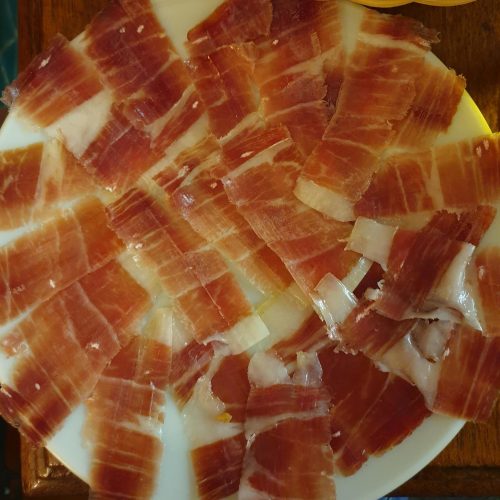
A Beginner’s Guide to Spanish Ham (Jamón)
Dear Caroline,
If you’re familiar with Spanish cuisine, one of the first things that comes to mind is probably the jamón, or cured ham. You may also immediately visualize Spanish restaurants with large legs of ham hanging over the bar and/or a leg of this ham being carved with a long winding knife from a jamonero (ham holder) that sits out on the counter day and night.
It’s definitely a big part of the Spanish culture and some aspects of it may seem odd to you at first but it is surely worth a taste-test! However, it’s important to note that not all cured ham is created equal and, even here in Spain, you are likely to experience different varieties of ham, of varying quality and taste.
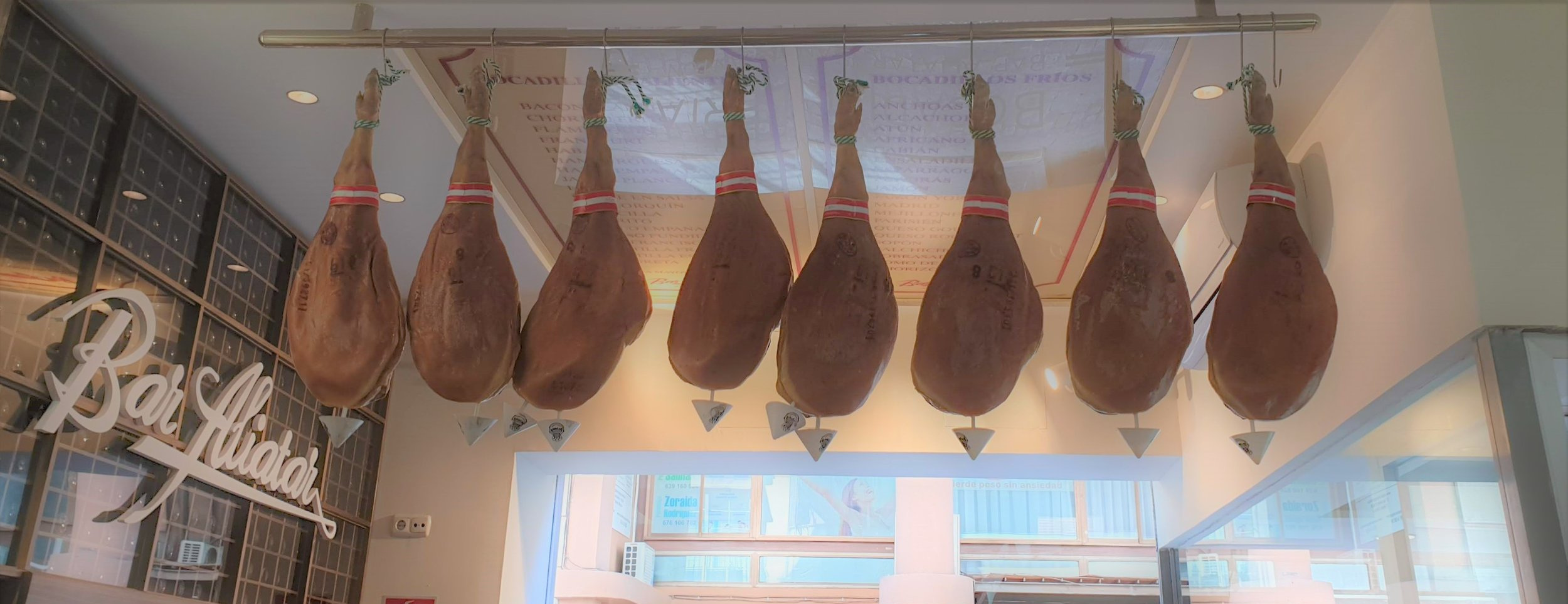
But first and foremost, what does it mean for ham to be cured?
This is a very good question that one can easily take for granted! The process of curing is essential to all of the typical hams you will encounter in Spanish tapas bars, restaurants, and delis, but what does it consist of? In order to cure jamón, the ham specialist will coat a leg of ham in salt, sugar, nitrates and/or nitrites in order to preserve it, carefully accounting for changes in temperature and humidity in the following 15-36 months.
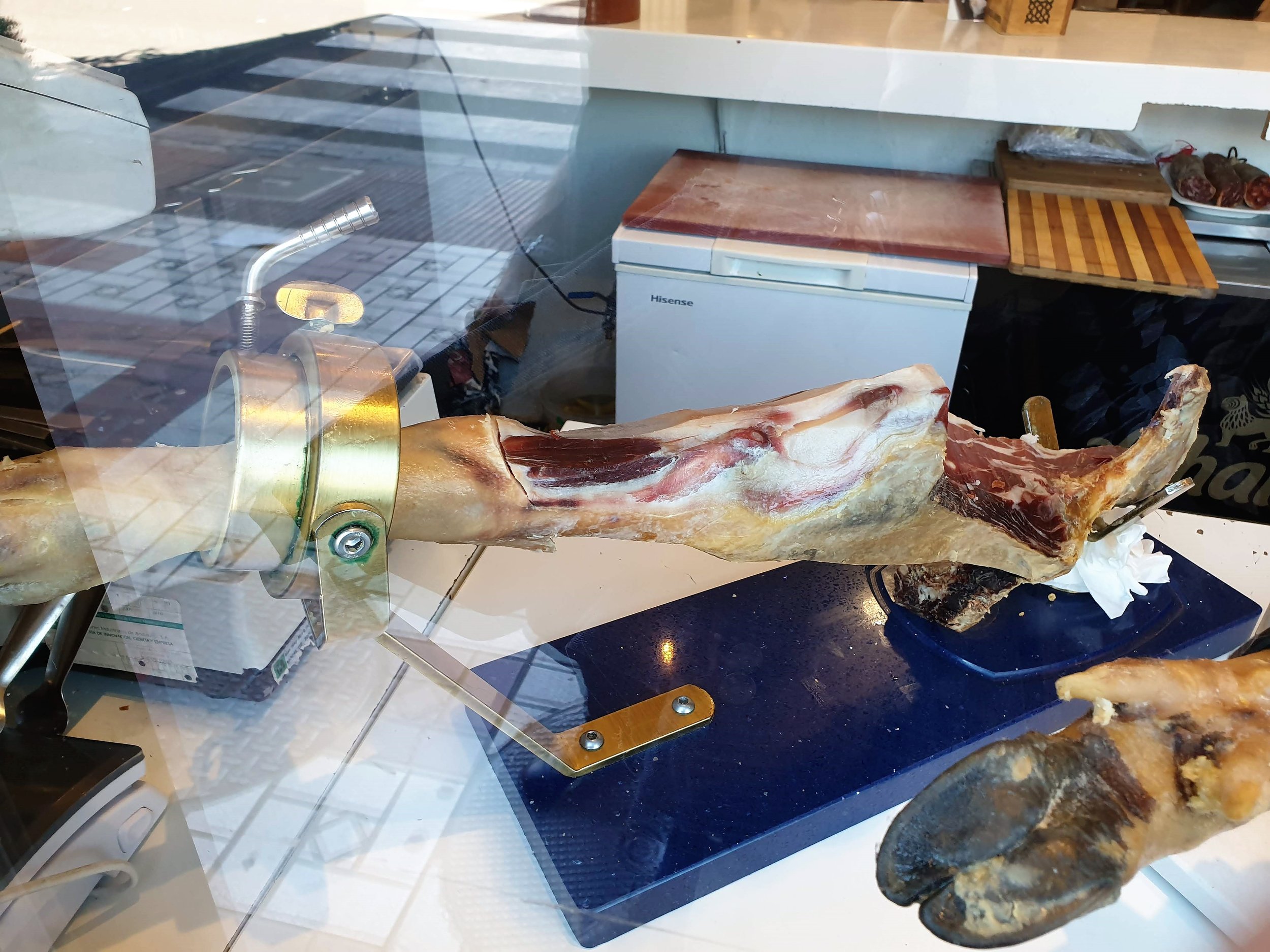 This process dates back centuries to a time when food was scarce and its careful preservation was necessary to ensure it didn’t spoil on long voyages or over otherwise long and difficult times. In order to make the meat last longer, it is coated heavily with salt to exterminate microorganisms, sugar to add flavor and actually encourage the growth of beneficial bacteria, and nitrites / nitrates to kill bacteria and create the desired flavors and traditional reddish color of cured meats. In some cases, smoke can be added to the equation as well.
This process dates back centuries to a time when food was scarce and its careful preservation was necessary to ensure it didn’t spoil on long voyages or over otherwise long and difficult times. In order to make the meat last longer, it is coated heavily with salt to exterminate microorganisms, sugar to add flavor and actually encourage the growth of beneficial bacteria, and nitrites / nitrates to kill bacteria and create the desired flavors and traditional reddish color of cured meats. In some cases, smoke can be added to the equation as well.
Because of the curing process—which must last a distinct amount of time depending on the ham being cured (see details below)—it is perfectly safe to store this ham at room temperature once the curing process had finished and the enjoying process has begun (as long as you know what you’re doing). Legs of ham are actually very popular gifts at Christmas time and families that don’t receive one as a gift will often go out and purchase one of their own, which they can enjoy for months to come.
Let’s dive into the three most important hams you should know:
Jamón Ibérico:
This name literally means “Iberian ham” which signifies that jamón ibérico can only come from Spain or Portugal (the Iberian Peninsula) for two primary reasons:
1.) The meat must come from Iberian pigs
2.) The meat must be produced through a specific process and under weather conditions that are only available on the Iberian Peninsula
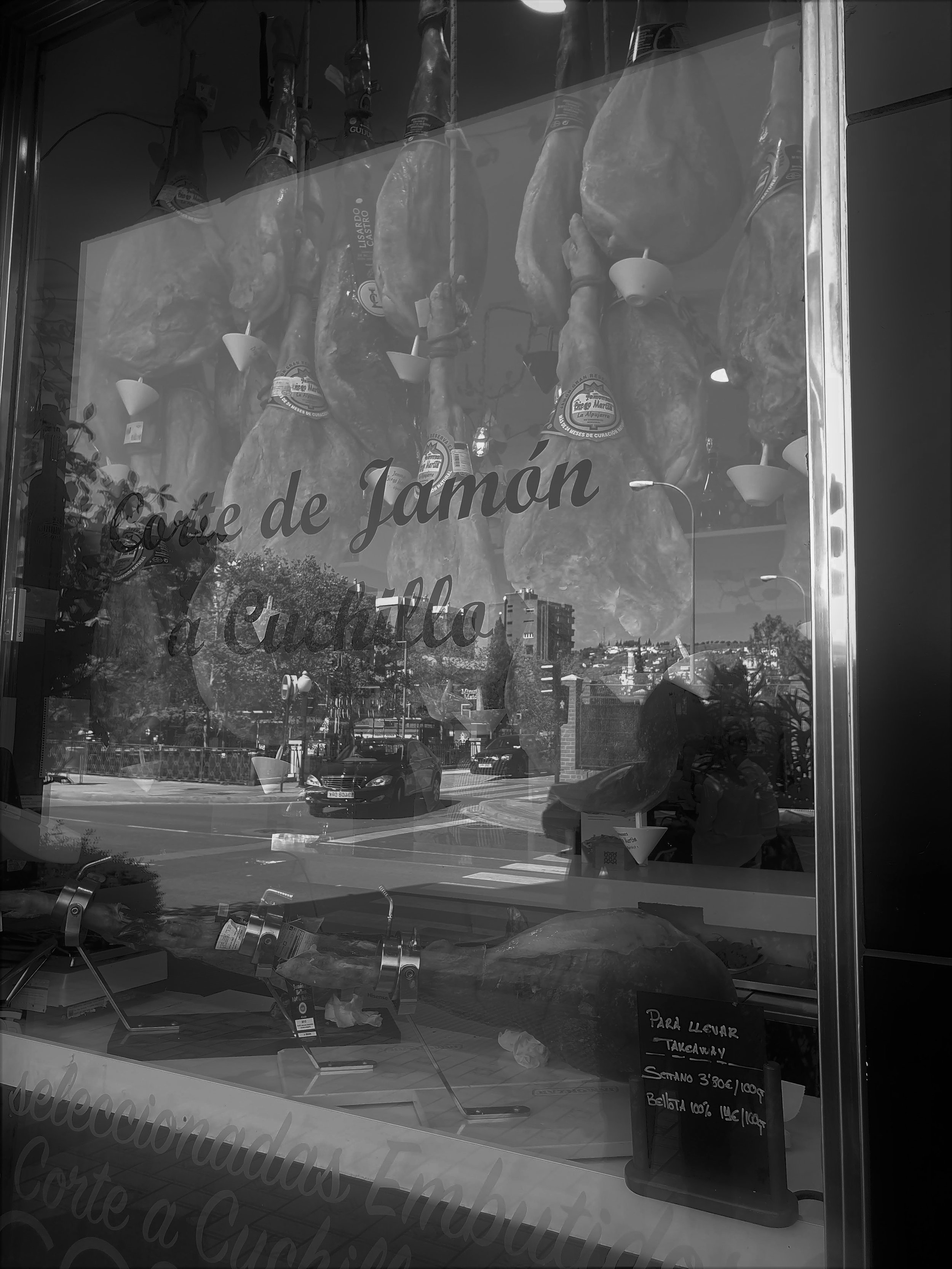 Jamón Ibérico is known for its particularly juicy flavor which is a result of the Iberian pig’s unique genetics that cause it to infiltrate fat in its muscles, something that no other pig does regardless of its diet or freedom to roam. Because the fat of this pig is the most important source of its aroma and flavors, do not be surprised if you are reprimanded for peeling the white chunks of fat away. This fat that you may have grown up discarding is part of the delicacy and not eating it can be viewed by many Spaniards as distasteful.
Jamón Ibérico is known for its particularly juicy flavor which is a result of the Iberian pig’s unique genetics that cause it to infiltrate fat in its muscles, something that no other pig does regardless of its diet or freedom to roam. Because the fat of this pig is the most important source of its aroma and flavors, do not be surprised if you are reprimanded for peeling the white chunks of fat away. This fat that you may have grown up discarding is part of the delicacy and not eating it can be viewed by many Spaniards as distasteful.
A final factor that differentiates jamón ibérico from other cured hams is the curing process which is longer and more costly. While other cured ham take between 15 and 18 months to finish the curing process, jamón ibérico requires at least 24 months (and 36 months if it’s de bellota– see below).
Jamón serrano (also known as Jamón Gran Reserva):
As you can imagine, jamón ibérico is much like champagne- the process of creating it can be carried out in other parts of the world but if it is not made in that region (with that region’s ingredients) then it cannot be called by its proper name. Hence, the result is ‘sparkling wine’ in the United States, ‘cava’ in Spain and ‘jamón serrano’ everywhere else jamón ibérico-like ham is made.
Serrano ham comes not from Iberian pigs but from a variety of white pigs such as the Duroc of the United States, Large White of the United Kingdom, and the Pietrain of Belgium. Farmers of jamón serrano tend to feed and care for their pigs under the best conditions, following the same process of montanera that Iberian pigs undergo. This final fattening phase (the montanera) in which the pigs are allowed to roam freely in the pasture, often eating acorns, or bellotas in Spanish, has positive effects on the ham’s quality. However, despite the pigs being cared for and the ham being essentially produced in the same manner, the genetic differences in the pigs that are used leaves jamón serrano on a lower quality level (at least by Spanish standards) than jamón ibérico.
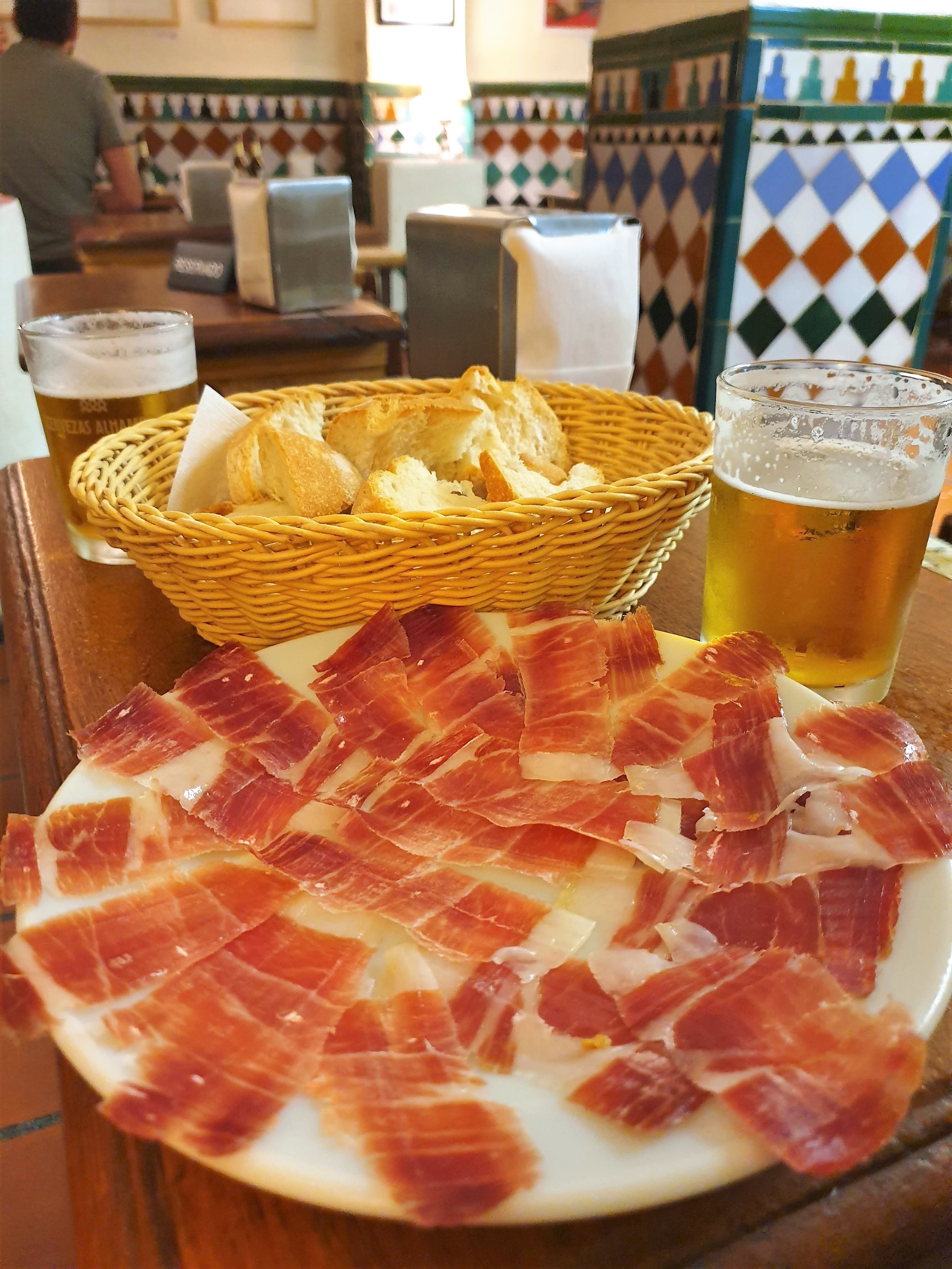 Jamón de bellota
Jamón de bellota
This ham gets its name from the diet of the pig which consisted of bellotas, or acorns. Only Iberian hams can be classified by their diet because, as noted above, the diet of non-Iberian pigs does not have the same effect on the taste of the final product. Thus, whether you see it sold as jamón ibérico de bellota or simply jamón de bellota, rest assured that you will receive one of the finest cured hams Spain has to offer. (Likewise, if see jamón ibérico de cebo this is simply a denotation of being ‘regular’ jamón ibérico, not jamón ibérico de bellota.)
The differences in this ham compared to jamón ibérico is two-fold. Firstly, jamón de bellota is produced from Iberian pigs who were free to wander and raised completely on a natural diet (acorns, grass, and other natural products) whereas the pigs raised to make jamón ibérico are generally fed cereal-based animal feed except during the montanera phase. Secondly, the curing process is much longer and more careful. Jamón de bellota is cured for two to three years, during which time the leg of ham will lose half its weight as the fat melts away, giving it its distinct, complex flavor.
This ham is generally deeper red in color and oilier than its traditional jamón ibérico counterpart. Jamón de bellota is typically the most expensive ham on the menu because of the time and cost invested in producing it but this does not make it inherently better. Many people prefer the taste of a jamón de bellota and describe it as melting in your mouth but, for some, this is not the desired experience of eating ham so be sure to try it both and decide for yourself.
Keep in mind that you can notice differences in flavor depending on where the pigs were raised and where the ham was cured as well (since the climate is a major favor in this final product) so be sure to keep trying the jamón wherever you wander! Do you have a favorite type of Spanish ham already? Let us know why in the comments!
Sincerely,
Spain
Resources:
https://www.enriquetomas.com/es/blog/en/glosario/curing/
https://www.enriquetomas.com/es/blog/en/differences-between-serrano-and-iberian-ham-get-to-know-them/
https://www.enriquetomas.com/es/blog/en/difference-between-jamon-iberico-de-bellota-and-jamon-iberico-de-cebo/
https://www.jamon.com/all-about-jamon.html



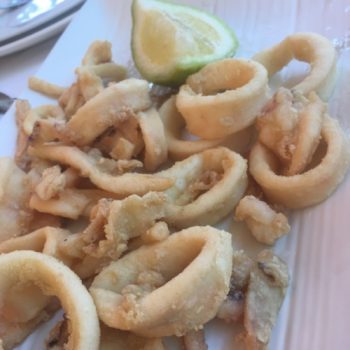

One Comment
curtrensillo@gmail.com
Nice, loved it